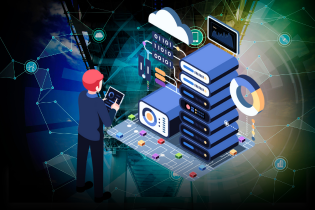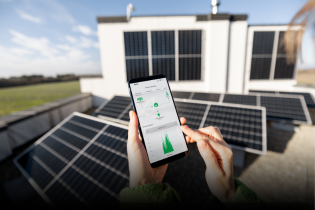The Internet of Things (IoT) is revolutionizing industries by connecting devices, enabling them to communicate, collect data, and automate tasks. However, managing a growing network of interconnected devices can quickly become overwhelming. This is where IoT Device Management Platforms become indispensable, providing the tools and protocols to ensure efficient, secure, and scalable IoT ecosystems.
What is IoT Device Management?
IoT device management encompasses the remote administration and maintenance of IoT devices throughout their lifecycle. This includes a range of tasks, such as:

Onboarding: Securely integrating new devices into the network.
Configuration: Setting device parameters for optimal performance.
Monitoring: Tracking device health, data flow, and status in real time.
Maintenance: Performing remote troubleshooting, firmware updates, and issue resolution.
Security: Protecting devices from cyberattacks and unauthorized access.
The Power of IoT Device Management Platforms
IoT device management platforms are central hubs for managing connected devices, including smart appliances, machines, sensors, and more. These platforms empower businesses to:
Streamline Device Management: Easily manage and scale their IoT deployments.
Enhance Efficiency: Automate routine tasks, freeing up valuable resources.
Improve Security: Protect devices from cyber threats and ensure data privacy.
Gain Valuable Insights: Collect and analyze data to optimize operations and improve decision-making.
Key Features of IoT Device Management Platforms
Provisioning: Securely onboard new devices into the network.
Configuration: Configure devices with optimal settings for performance and compliance.
Monitoring: Track device health, data flow, and performance in real-time.
Firmware Updates: Deliver over-the-air (OTA) firmware updates to enhance security and functionality.
Diagnostics and Troubleshooting: Identify and resolve issues remotely.
The IoT Ecosystem: A Network of Interconnected Components
The IoT ecosystem is a complex network comprising various interconnected components:
IoT Devices: Sensors, cameras, actuators, and other devices that collect and transmit data.
Connectivity: Communication networks such as Wi-Fi, cellular, LPWAN (LoRa, NB-IoT, Sigfox), Bluetooth, and satellite networks.
Cloud Platforms: Cloud services for data storage, processing, and analysis.
Analytics and Data Processing: AI and machine learning algorithms for extracting valuable insights from data.
Application Layer: Dashboards, mobile apps, and web interfaces for user interaction and data visualization.
Essential Protocols for IoT Device Management
Several communication protocols enable seamless interaction between IoT devices:
MQTT: Lightweight messaging protocol ideal for low-power and low-bandwidth devices.
CoAP: Designed for constrained environments with limited processing power and battery life.
HTTP/HTTPS: Widely used for web-based communication, but may consume more power and bandwidth.
LwM2M: Lightweight protocol for secure and efficient communication between devices and management platforms.
AMQP: Advanced Message Queuing Protocol for high-reliability messaging in enterprise IoT environments.
Key Steps to Hassle-Free IoT Device Management
Seamless Device Onboarding and Offboarding
- Securely register and configure new devices.
- Decommission devices effectively to minimize security risks.
Over-the-Air (OTA) Firmware Updates
- Deliver firmware updates remotely to enhance security and functionality.
- Schedule updates to minimize disruption.
- Implement automated rollback mechanisms.
Proactive Device Monitoring
- Monitor device connectivity and health in real-time.
- Set up alerts for downtime and anomalies.
- Utilize dashboards for easy visualization of device performance metrics.
Strong Credential and Access Management
- Issue device certificates for secure authentication.
- Revoke access to unauthorized devices.
- Regularly rotate credentials to enhance security.
Efficient Device Assignment
- Assign devices to specific users or customers.
- Restrict user access based on roles and permissions.
Centralized Management of Device Attributes and Data
- Track telemetry data, analyze alarms and events, and remotely adjust device attributes.
Managing Device Relationships
- Define relationships and dependencies between devices for optimal performance.
- Automate workflows based on device interactions.
When to Invest in an IoT Device Management Platform
Growing Device Network: When managing an increasing number of devices becomes challenging.
Security Concerns: When addressing security challenges related to device authentication and data protection.
High Maintenance Costs: When the cost of manual device management outweighs the benefits.
Complex Use Cases: When deploying IoT in critical infrastructure sectors like manufacturing and healthcare.
Regulatory Compliance: When adhering to industry regulations like GDPR or HIPAA.
The FSM Connect Advantage
FSM Connect offers a robust IoT Device Management Platform that empowers businesses to:
Accelerate Time to Market: Rapidly deploy and onboard new devices.
Minimize Downtime: Proactively monitor and maintain device health.
Enhance Security: Protect devices from cyber threats with advanced security features.
Increase Efficiency: Automate tasks and reduce operational costs.
Conclusion
In today’s interconnected world, the Internet of Things (IoT) is revolutionizing industries across the board. However, effectively managing a growing network of connected devices requires a robust and efficient approach. IoT Device Management Platforms provide the critical tools and infrastructure to seamlessly onboard, configure, monitor, and maintain IoT devices, ensuring optimal performance, enhanced security, and reduced operational costs.
By leveraging the power of IoT Device Management Platforms, businesses can unlock the full potential of their IoT deployments, gain valuable insights from data, and drive innovation across their operations.
Contact FSM Connect today to explore our comprehensive IoT Device Management Platform and learn how we can help you build a secure, scalable, and successful IoT ecosystem.


